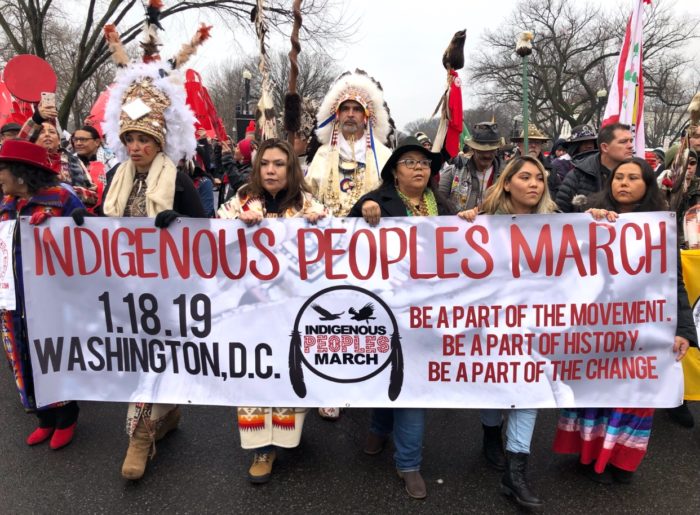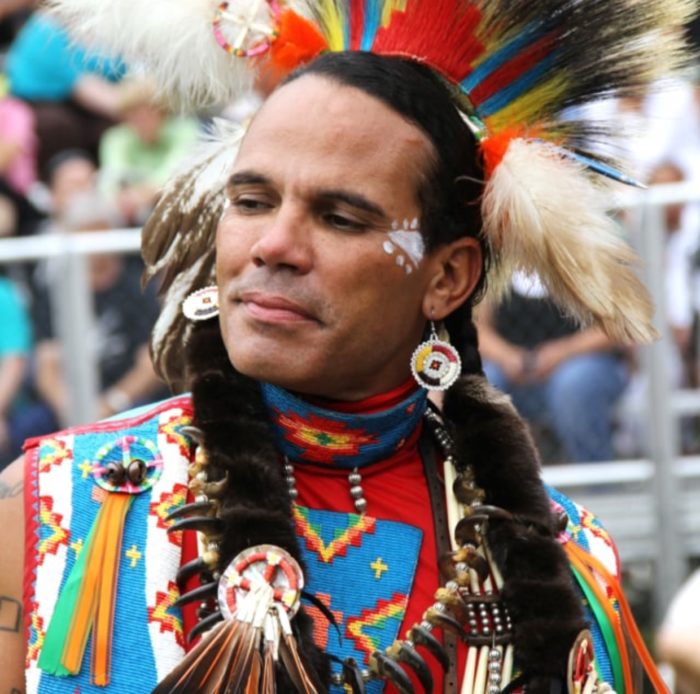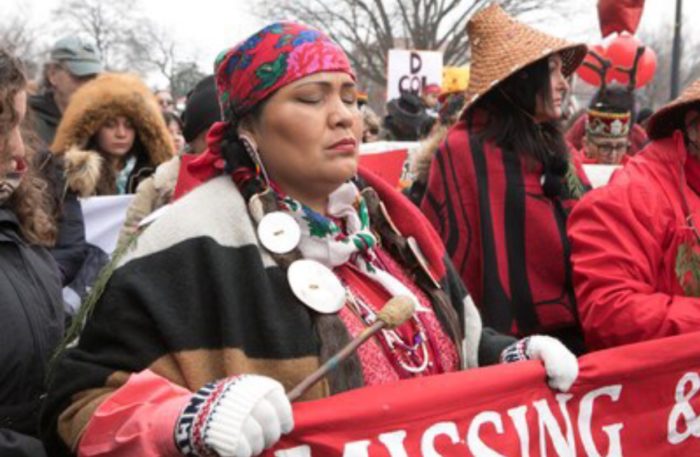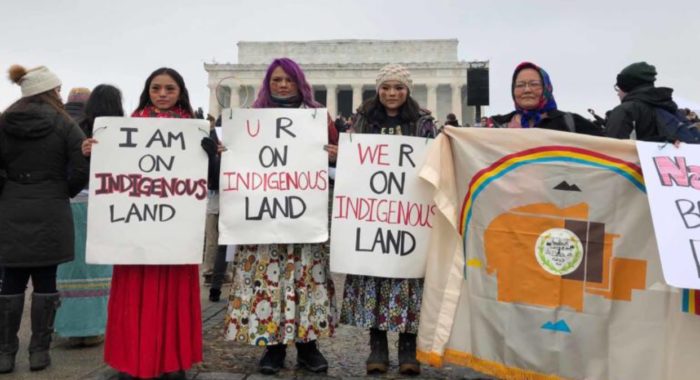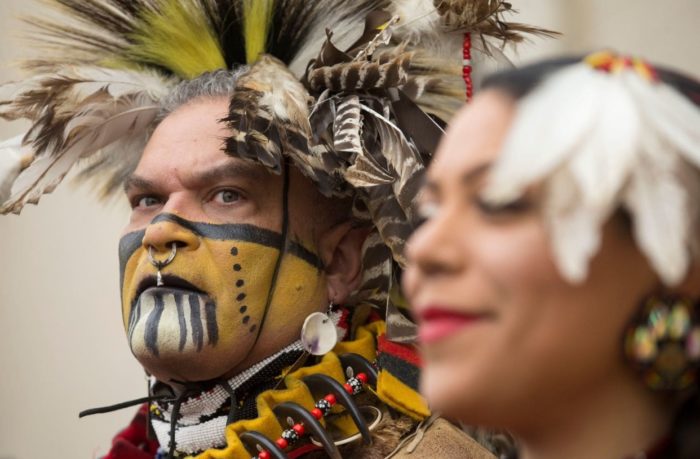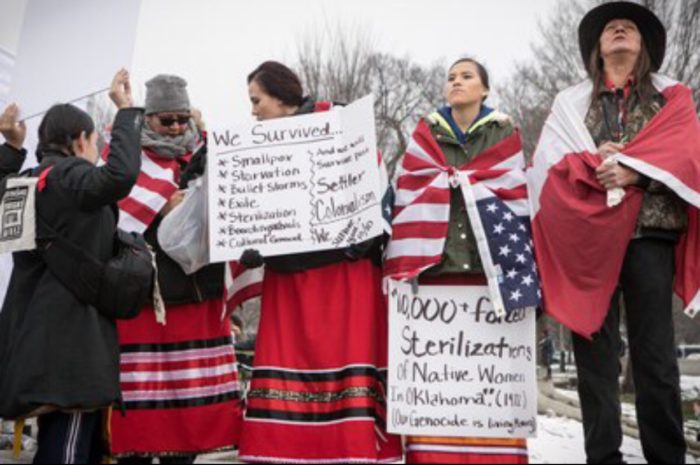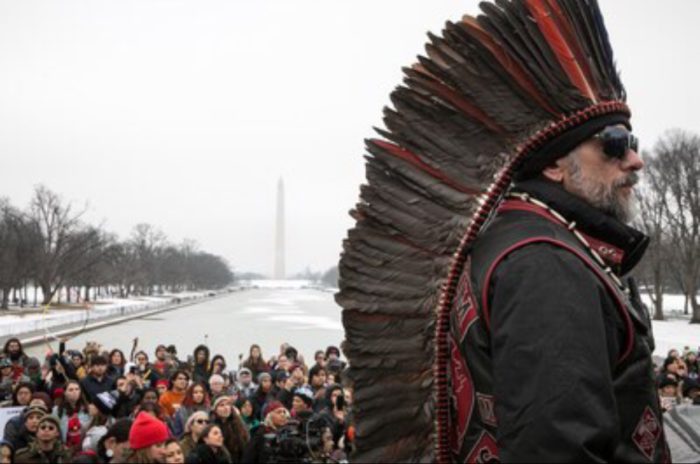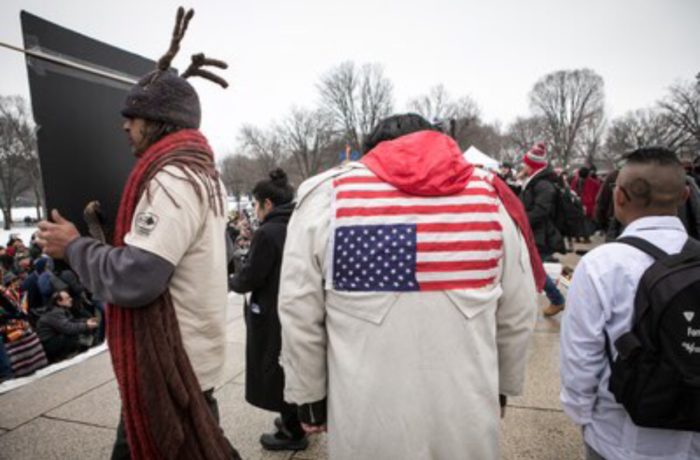By Fariha T. Rahman
Historically, it can be argued that modern Western imperialism reached its height during the 1900s, when European nations raced with one another to exert their dominance throughout the world. While it is now the 21st century and hundreds of nations have attained self-determination, there are still problems that plague the indigenous populations— most of which are undermined, or even go unnoticed.
This year on January 18th, thousands gathered in Washington D.C. to protest the lack of protection and ongoing discrimination experienced by Indigenous groups worldwide, but most especially by the Native Americans in the United States. Attracting both human rights activists and environmentalists, the Indigenous People’s March displayed a powerful image of continued perseverance despite adversity, and a cry for change.
The front of the line with the event banner.
Event organizer Nathalie Farfan (above), an Ecuadorian-American who co-hosts the Latina feminist podcast “Morado Lens” and maintains the Las Brujas spiritual wellness community in New Jersey.
Event organizer Cliff Matias (above) is the director of the Redhawk Native American Arts Council in Brooklyn, New York and claims both a Quechua and a Taíno heritage.
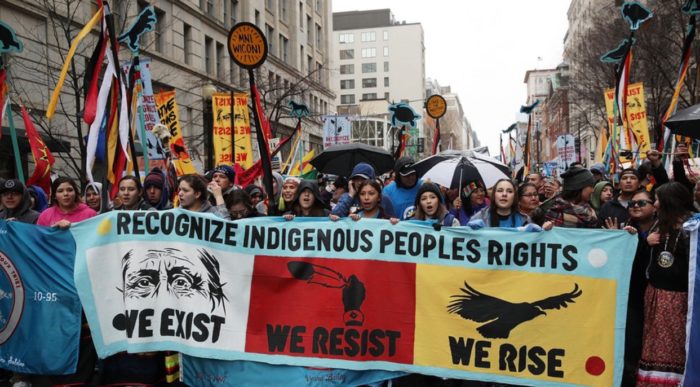 One sign displaying one of the famous slogans for the movement: “We exist, we resist, we rise.”
One sign displaying one of the famous slogans for the movement: “We exist, we resist, we rise.”
A woman from the Pacific Northwest (above) closes her eyes during a silent prayer honoring missing Native girls and stolen land.
Three young women hold signs to remind others of the original inhabitants of the land.
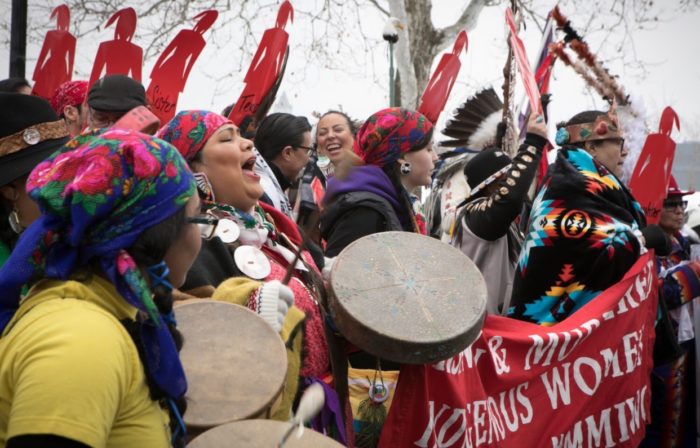 A group beats drums while being surrounded by red cutouts inscribed with the words “sister,” “mother,” “grandmother,” and “friend” to remember the thousands of of missing and murdered Indigenous women (MMIW) who have disappeared from their communities.
A group beats drums while being surrounded by red cutouts inscribed with the words “sister,” “mother,” “grandmother,” and “friend” to remember the thousands of of missing and murdered Indigenous women (MMIW) who have disappeared from their communities.
Many protesters dressed in tribal clothing, and painted traditional designs, to honor their ancestors’ culture.
A woman holds a sign listing the atrocities faced by Native Americans throughout history.
Nova Saigo (above) from the Redrum Motorcycle Club, an inter-tribal motorcyclist group that also includes non-Native members who “follow the Native way.”
The upside-down American flag represents emergency or distress. In the 1970s, this symbol was also used by the American Indian Movement to highlight the disastrous conditions on reservations, including the lack of water, food and other basic necessities.
